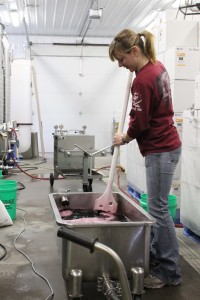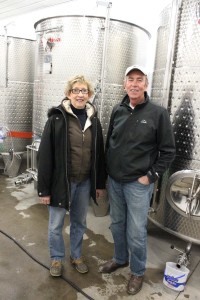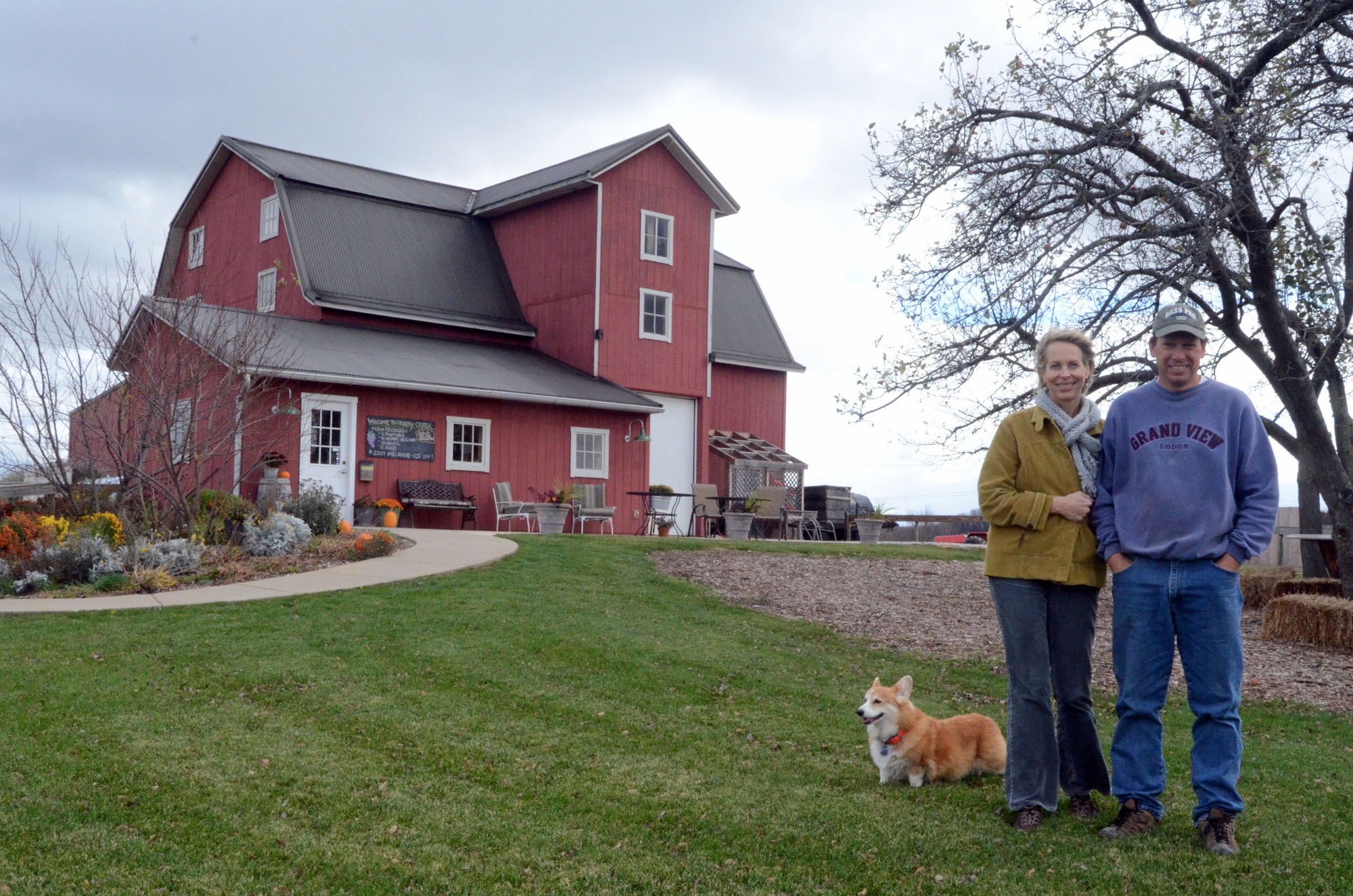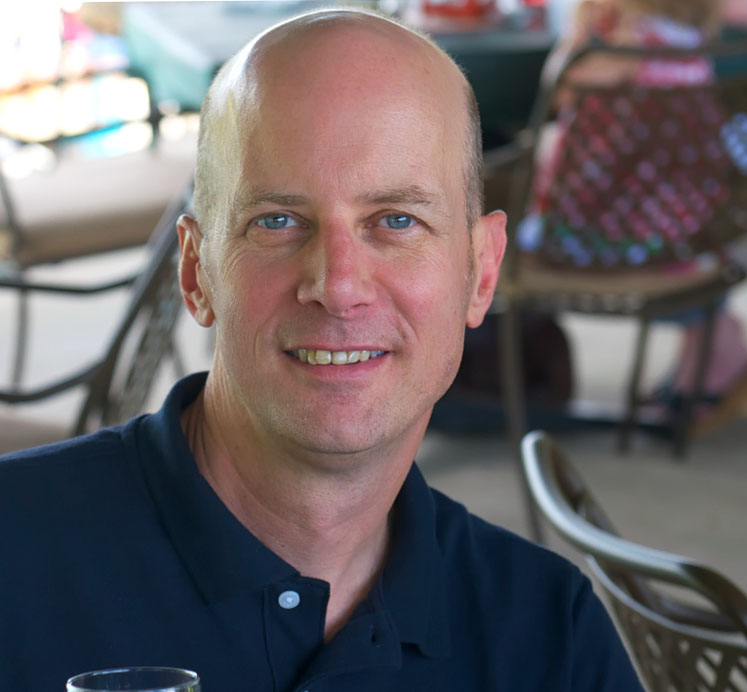Ardon Creek Winery: Heinz Tomatoes to Hybrid Grapes
159 years ago, an Irish family made its way to Southeast Iowa and settled between the rivers Cedar and Mississippi. The descendants of that family reside there still, and display their ancestral pride through a symbolic three-leaf clover, artfully worked into the logo of the family’s current venture: a vineyard and winery named Ardon Creek.
‘I was raised here, and all the Furlongs in our lineage are from here,” said Mike Furlong. Along with his wife, Diane, he manages the day-to-day operations of the vineyard and winery.
‘My father raised tomatoes for Heinz when Muscatine had a plant,” said Mike. ‘During those years, the place would be full of people working, harvesting, and so I got exposed to that and some of the pitfalls – the good, bad, and different. I think that has helped us because it’s a little like the wine business.”
In addition to Mike’s experience on the family farm, the Furlongs’ work experience in the business world has proved valuable as well. ‘The marketing stuff, the sales stuff,” said Diane. ‘I sometimes think that it can be lacking [in other wineries].”
Transitioning the family farm into a vineyard hadn’t been at the top of the Furlongs’ list from the start. Instead, driven by a desire to rejuvenate the ancestral farmstead, they entertained a variety of options. It was a grape growing seminar which finally convinced them it was the right course of action.
‘[Mike] came back from that seminar, that very first one he went to, and said, ‘I think I found it, I think we’re going to raise grapes and make wine’,” said Diane. ‘At that point we were so captivated by the whole romance idea of wine.”
‘We started to go to classes that Iowa State put on in 2000, planted our first grape vines in 2004, and then opened the winery in 2009,” said Mike. ‘So we’re starting our fifth year as a winery, and eleventh as far as the vineyard.”
Ardon Creek produces about 3,000 gallons of wine annually from the grapes they grow on site including Concord, Noiret, Chancellor, Edelweiss and LaCrosse. Additional juice is brought in from New York which they use to fulfill their total production of 6,000 gallons or more, a process made easier with help from loyal community members.
‘It’s just amazing to me. We bottle probably about once a month, twice a month, seventeen times in a year, or something like that — the bottling team are the same volunteers every single time,” said Diane.
‘We kind of take to the Hillary Clinton quote of, ‘it takes a village’, and to run a winery that seems to be our perspective,” said Mike. ‘It doesn’t hurt that Diane is one of these bon appetit kind of cooks, so she really puts on a nice spread. We think of stories about threshers and getting together to do the threshing of the wheat and oats or whatever — there’s some of that going on. I think the uniqueness of the endeavor intrigues people, so people are interested in being involved.”
‘Everybody likes wine,” said Diane.
At the present, the winery operations are contained within a single building which is separated into a tasting room and a large space for winemaking and storage. The winemaking room is lined on one side by a row of tall, stainless steel tanks. On the opposite wall, a long table covered with laboratory equipment. A mountainous stack of boxes sweep down the center: bottles waiting to be filled or sold, oak infusions ready to be immersed in aging wine, labels waiting to be adhered – provisions for a busy winery. A cement crush pad hugs one of the outer walls of the building.
‘As time goes on and as the business grows we can see ourselves using real oak barrels to age some of our wines, and adding some reserve releases. We might also put up another facility so we can host weddings more practically rather than worrying about the weather conditions,” said Mike.
Among the challenges the Furlongs have faced has been product recognition and capturing a strong market share.
‘It’s a whole learning curve for the audience as much as it’s been [for us],” said Diane. ‘These grapes have been largely unknown. Everybody recognizes Concord, but that’s about the only one.’
‘The market share portion is challenging because to gain market share you have to spend money — any kind of growth you have to spend money, it seems like in this industry,” said Mike. Despite these challenges the Furlongs remain positive about the endeavor.
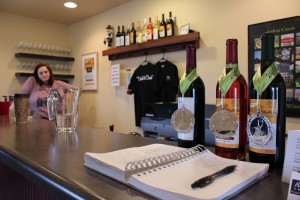
Ardon Creek won three medals at the Finger Lakes International Wine Competition for their Commission Man Red, Rosemary’s Rose and Red 52.
‘I think that people will begin to recognize more of the cold climate grapes as time goes on,” said Diane.
‘I’m a big believer in Chancellor and Noiret,” said Mike. ‘First of all, I like dry reds. It’s winter hardy to about 15 degrees with 50 percent bud kill. It comes very close to the vinifera world, maybe a light Corot Noir or a Cab, if you want to call it that. When we [the Furlongs] drink wine, we drink that, or I do anyway.
The Noiret grape was developed by Cornell in New York; we have an acre of that and we make that in a dry red style and it has hints of black and green pepper and it makes for a very complex, interesting wine. Does it taste like Cabernet Sauvignon? No, but does it taste like interesting dry red? Yeah.”
In their eyes, the future of the Iowa wine industry also remains positive.
‘I would say there would be fewer wineries and they might be larger, and I think those that remain will be better winemakers and will also have different winter hardy hybrids that might make some of the dry people happy,” said Mike. ‘It took Napa three decades to really get themselves [to where they are now] — and I’m not comparing Iowa to Napa, but it’s a long process.”
In the meantime, however, the Furlongs focus their efforts on rejuvenating the family estate.
‘Since it has been in our family 159 years some of it is a legacy thing for the next generation,” said Mike. ‘This is a community making a unique product and it’s a pretty good product.”

